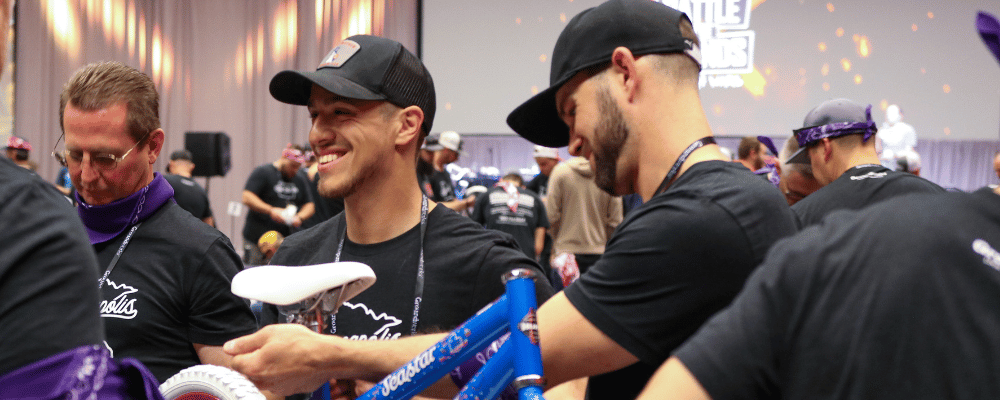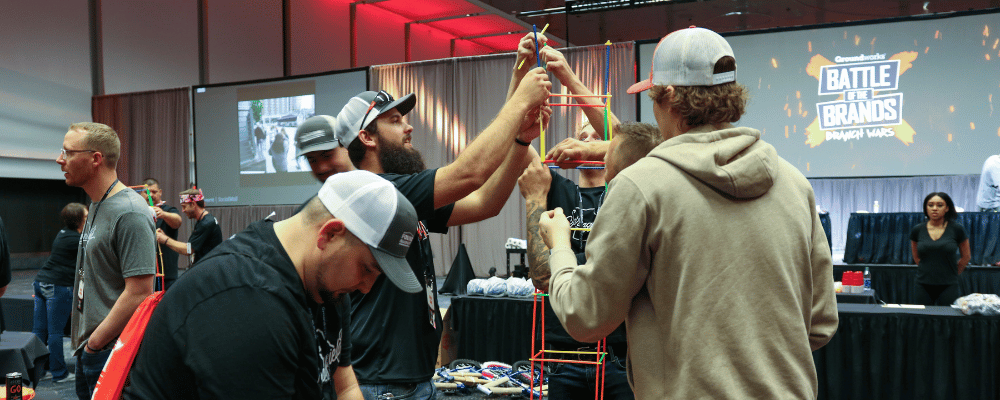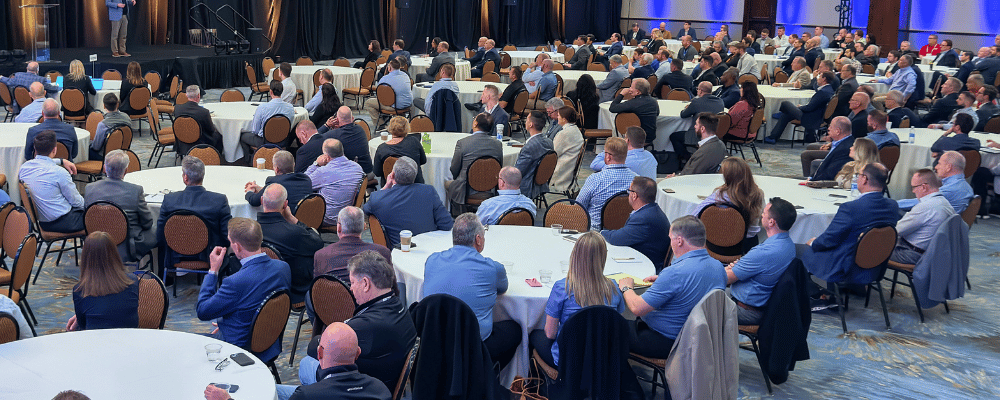Raise your hand if you’ve been personally victimized by Two Truths and a Lie. 🙋
We all know how painful icebreakers can be.
It’s fair to say most people try to avoid them, and many of us planning events have given up on incorporating them into our conferences or meetings.
But icebreakers remain effective.
They can help ensure people feel comfortable enough to participate throughout your event, and they’re a great structured way to promote engagement and discussion among attendees. Plus, they help everyone feel connected to their fellow attendees in one way or another, which means they’re more likely to interact with them later in the conference. (For more interesting insights into why icebreakers are effective, check this article out.)
So how do you create icebreakers without striking dread into your attendees? Here are our suggestions.

Set People Up for Success
Make your event a place where random introductions and facts about individuals are the norm.
Make sure they know from the first invitation that your event is meant for networking and interactions.
- Encourage people to get out of their comfort zones.
- Make sure people don’t group up with those they already know.
- Think through ways you can facilitate networking (whether that’s through table assignments, badge colors, or another way).
If every communication you have for your event encourages people to interact, then they will be more likely to show up to the event and participate in the way you want them to.
Also make sure you have structure around your icebreakers. Don’t just expect people to show up and network – you should have your icebreaker session clearly worked into your agenda and outlined for your attendees so they know what to expect.

Make it More Fun
Two Truths and a Lie – toss it out the window.
We’ve all done these types of icebreakers a million times and they can start to feel stale.
Effective icebreakers need to feel more fun and comfortable for the attendees involved.
- Having an emcee involved can make the experience much more upbeat
- Include music and weave in games
- Understand what your attendees like to do (are they more active or do they prefer intellectual conversations?). Tailor the interactions to their preferences.
- Don’t make attendees feel like they’re obligated to get to know one another; make them actually want to interact.
Think about ways you can weave in levity and fun throughout the icebreaker session, then work with your event management team to incorporate those ideas into the logistics.

Weave it into Your Overall Event Theme
Gamification wrapped into an overarching event theme not only helps people get into the spirit of your event, but also helps you tie everything together.
Take a sports theme for example.
Your attendees are in the sporting industry. They are coming to your sports-themed event. They understand the purpose and theme of the event. But then you throw in a random icebreaker that has nothing to do with the theme.
Why not tie it all together?
Assign each person a team position via a badge color (let’s say forward on a soccer team). Then have them find all their teammates throughout the first day, gather together, create a team name, and then compete throughout the event.
This can also be incredibly effective at ensuring new people mingle (so you don’t have people in clumps with those they already know).

Don’t Reinvent the Wheel
So many times, our clients come to us saying they’ve done everything under the sun to get people to interact, and nothing works anymore.
We get it.
It’s difficult to get attendees to interact with new people, especially if they already know a small group at the conference. But that doesn’t mean you need to invent some magical new concept to get people to interact.
In fact, it can sometimes be more effective to leverage icebreaker activities that people are already familiar with.
The key is to structure the icebreaker session.
Whether it’s volunteers who lead conversations or nametags that denote who people sit with, you’ll need to do some pre-planning to make sure your icebreakers go smoothly.
It’s also helpful to collect feedback from attendees on what they liked or disliked, instead of making your own judgments about how the session went, so you can continue to improve year-over-year.
Additional Ice Breaker Ideas
Here are a few of our favorite recent icebreakers we incorporated into our clients’ events.

Gamification
Gamification icebreakers involve the entire group in an interactive session, most likely with an emcee.
Think of an Amazing Race-style format in which you have a few hours to do an interactive session where smaller groups are competing against each other with different activities. The emcee leads different sessions (e.g. competing to build a Rube Goldberg machine) and tallies points throughout.
This can be tied back into your overall communications and theme around the event and can be intentionally created to have different groups work together.

Small Group Networking
This isn't a new concept, but the general idea of speed networking or Human Bingo is still effective for icebreakers.
To encourage attendees to speak to new people, it can help to have something on their badges that indicates where they have to go (e.g. a specific color coordinates with a specific table, so people can't just move around with their friends).
We have also seen this implemented in a loud-tables style where each table has a moderator that leads a pointed discussion for the group (could be related to business or could be more get-to-know-you topics). Again, you can utilize badge colors to make sure people actually mix up who they sit with.

Small Group Questions
We love incorporating more thoughtful questions into these small group networking sessions, instead of something like two truths and a lie.
We recently used, "What did you want to be when you grew up?" as one. You can keep the question light or make it more business-focused, but the point is to let it be relatively easy to answer and easy to spin into a larger conversation.
This can even woven into the registration process, so you put people together who said similar things (or maybe create groups that are completely different so they can learn from each other).
Questions like these are easy to answer but can open a lot of fun conversations that attendees can then use to interact with new friends throughout the conference.




